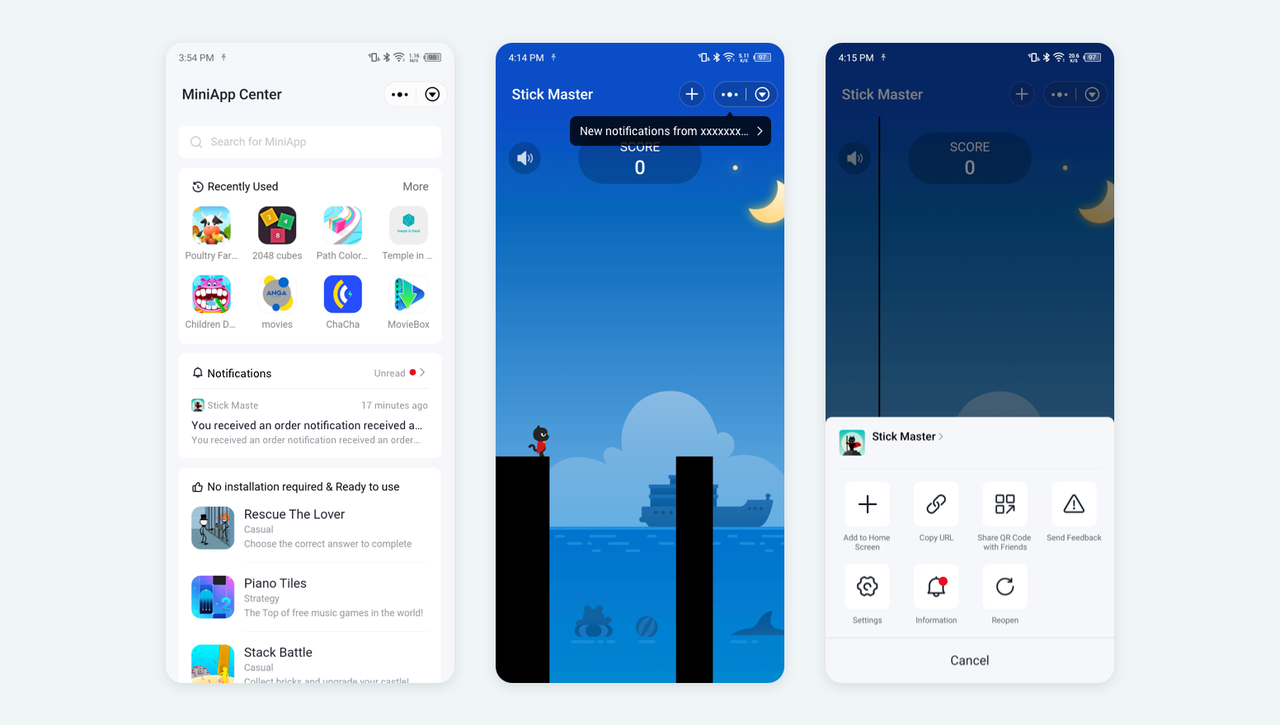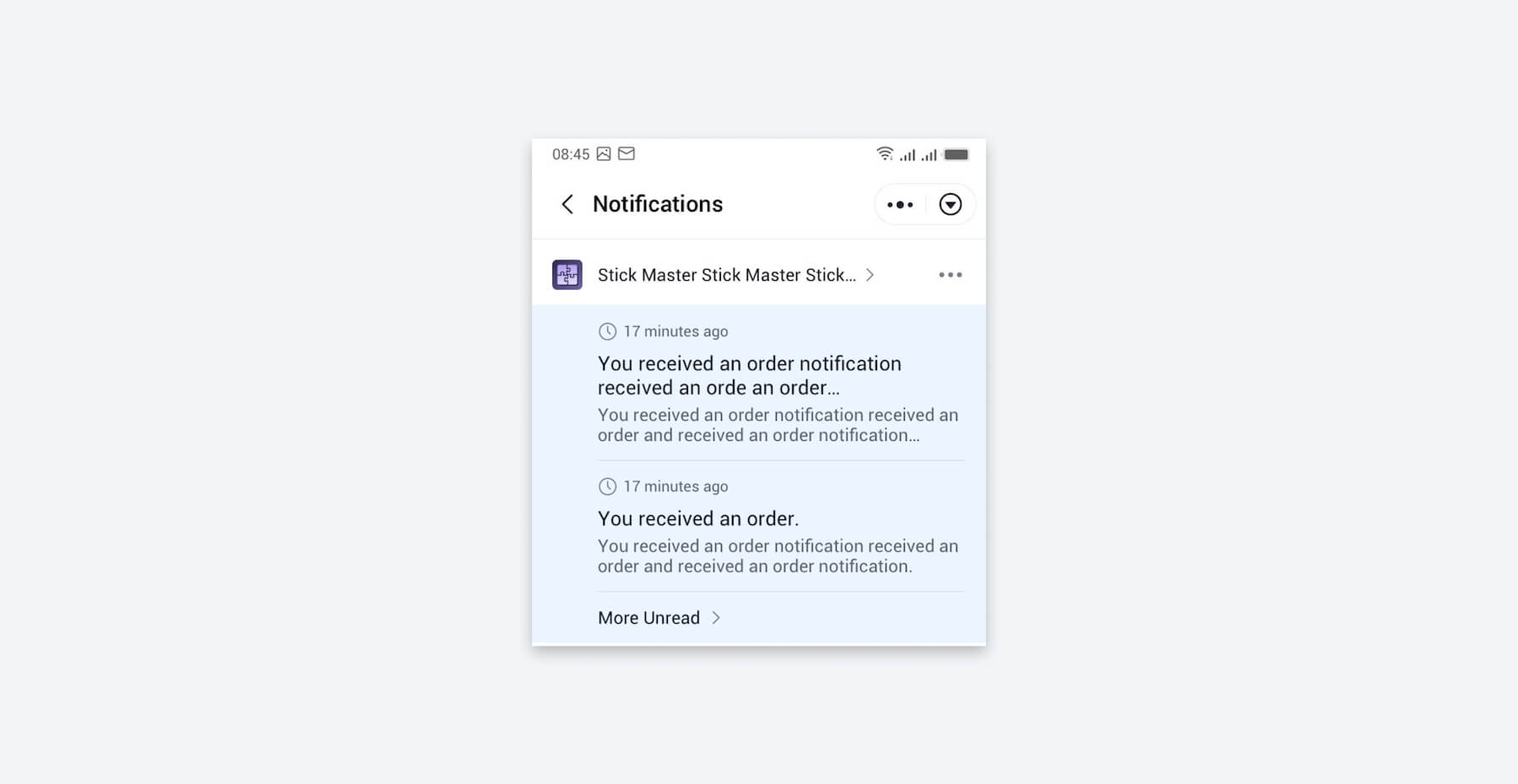Message Introduction
Introduction
The message function is an important part of Mini-Program capabilities. We provide developers with service message capabilities to achieve a closed loop and better experience for services.
Typical Scene
Viewing Messages
- Service message push location: MiniApp Center homepage, capsule button bubble notification, message button in floating window for more options

Conditions
Opening Conditions
This product is available to both enterprise and personal accounts.
Sending Conditions
| User Type | User Display | Message Sending Rules |
|---|---|---|
| Active users | Used Mini-Program in the past 30 days (including the 30th day) | Can send 1 message every 3 days |
| Inactive users | Not used Mini-Program in ≥30 days | Cannot send messages |
Quantity Limitations
Message sending limit: 200 messages per second
Access Methods
Step 1: Capability Application
On the Mini-Program capability management page, go to the Open Capability - Message page and apply for access.
Step 2: Access Message Interface
Refer to the Mini-Program Message Platform Access Document for details.
Usage Standards
Message Content Setting Standards
- Message Element
Service message elements include: title, content, and jump URL

The title content length cannot exceed 80 characters;
Only text can be used for the title and content, no variables are allowed;
The title and content cannot contain any special characters;
The jump address must be a page address within this Mini-Program.
Message Usage Standards
1. Prohibited content violating national laws and regulations: Service messages cannot contain content that violates relevant national laws and regulations, and cannot contain content related to sensitive topics, pornography, and the violation of public order and morality. They cannot contain any content that infringes on any third-party privacy or other legal rights and interests.
2. Prohibition of message repetition: Messages to users for the same action under the same business scenario cannot be repeated.
3. Prohibition of sending false messages:
Prohibited content that does not match actual situations, such as reminding users of insufficient talk time when their balance is sufficient, misleading users to recharge;
Prohibited content that is unrelated to the receiving page, such as guiding users to immediately check their balance, but leading to irrelevant content such as membership or event marketing.
4. Prohibition of external links or promotion downloads: Any external link to another website/service or promotion of another APP download in any form is prohibited, and the message receiving page needs to use the Mini-Program.
5. Prohibition of messaging harassment: Frequent messages with the same or similar content, which may be viewed as harassing users and cause user annoyance or even complaints, are prohibited.
6. Prohibition of sending messages we deem unreasonable or inappropriate.
Message Violation Governance
If the Mini-Program contains content that violates this specification, we will adopt restriction measures such as disabling message capabilities, revocation of message capabilities, and removal of Mini-Program based on the degree, content, and consequences of the developer's violations. If losses are caused, we reserve the right to hold Mini-Program developers liable for legal responsibility.
Others
As the industry develops, we will adjust this specification as needed and announce it through the MiniApp Center Open Platform bulletin. If the Mini-Program developer continues to use the Mini-Program service after the content of this specification is changed, it will be considered agreement with the changed standards.